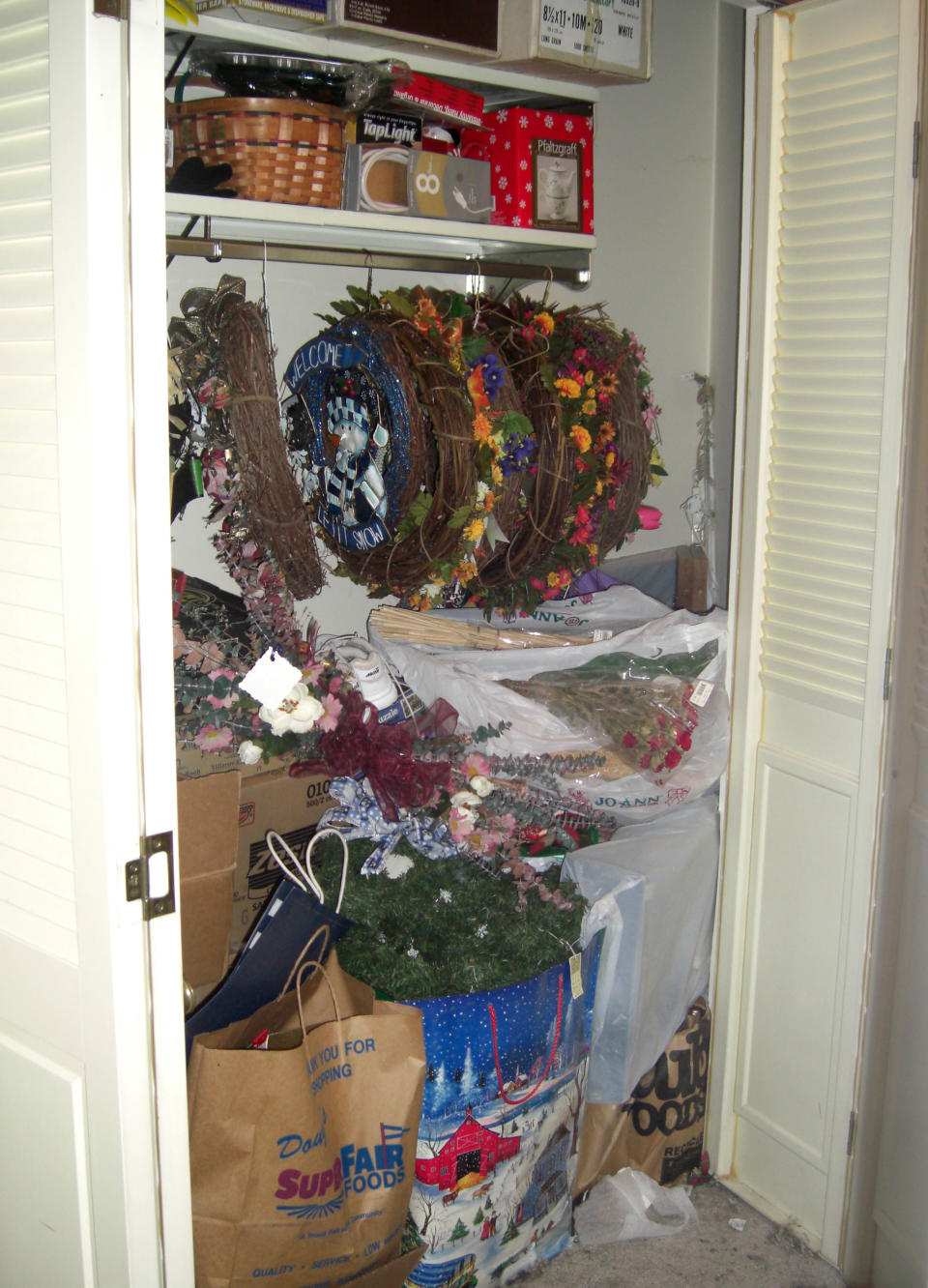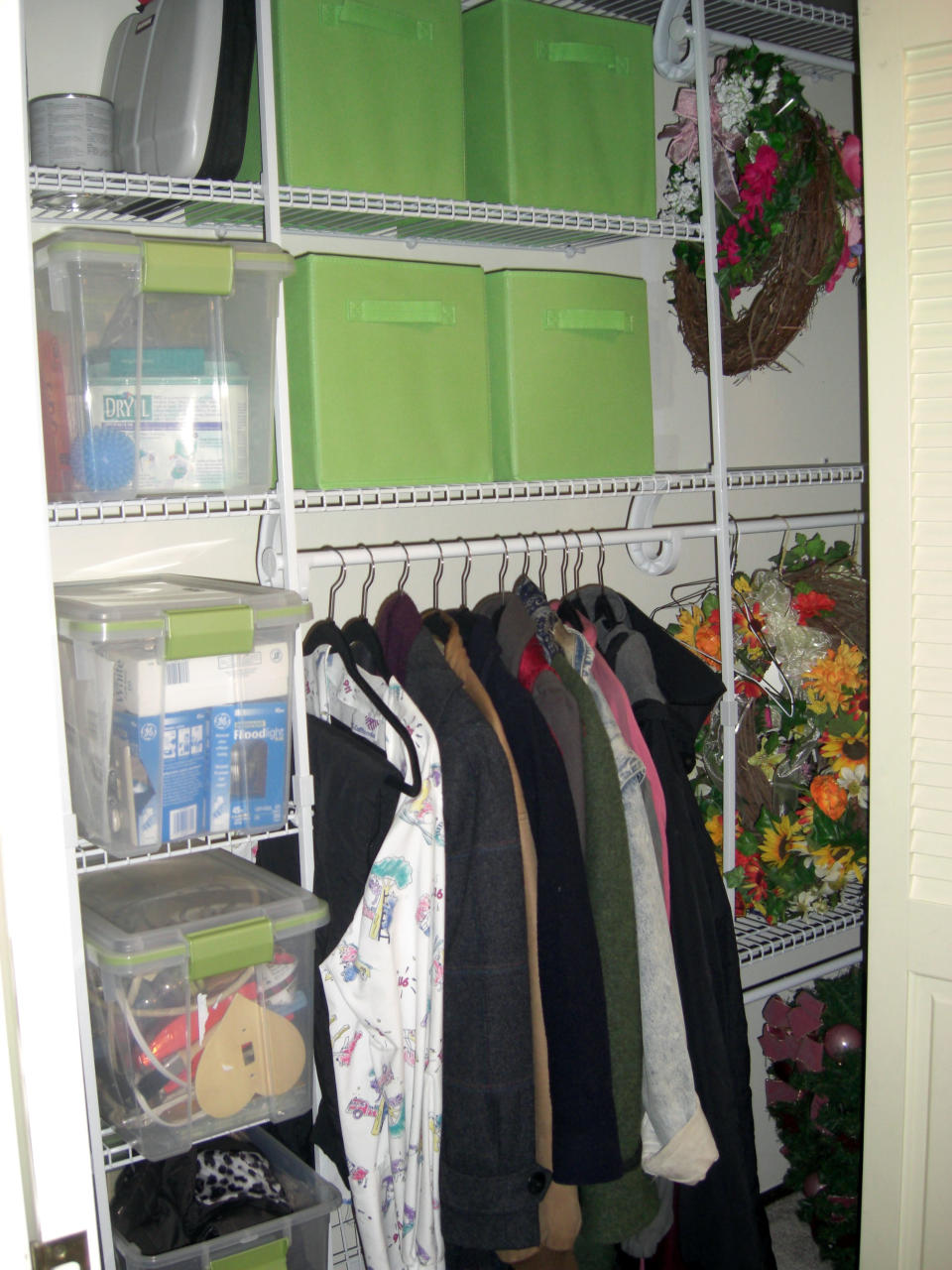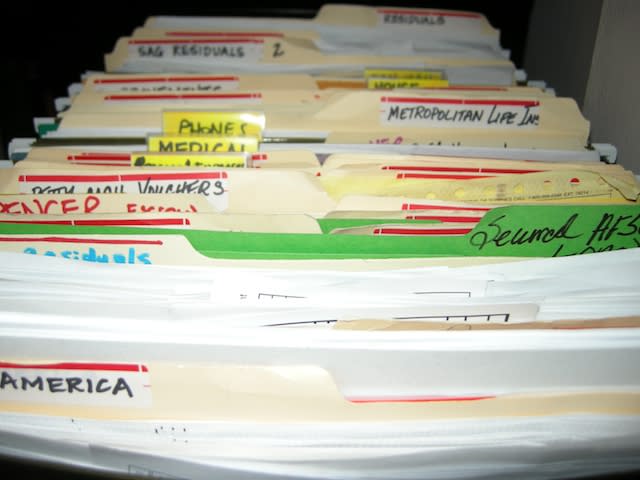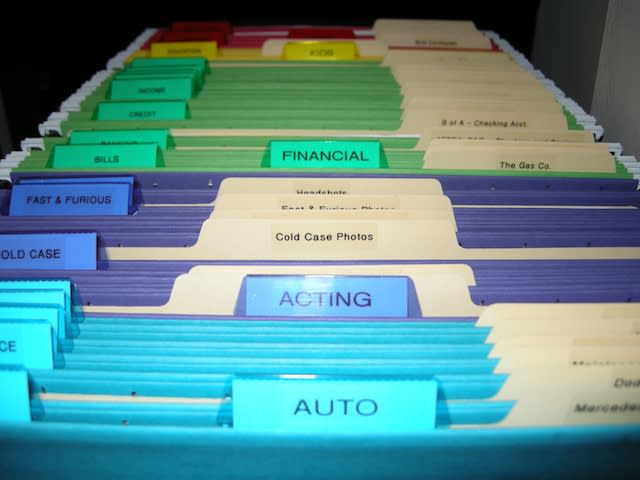3 quick projects that kill clutter
If, like me, you spent this winter hibernating and eating baked goods, your home may have paid the price. Maybe it got a little disorganized, or is starting to look like an episode of "Hoarders."
Spring is a great time to shake off that winter sluggishness and free yourself from clutter.
But where to begin? Spring cleaning can feel overwhelming if your to-do list is more like a to-do novel.
Never fear: Three professional organizers are here to offer three projects you can do in an afternoon each:
HALL CLOSET
Nikki Havens of Seriously Organized in Bloomington, Minn., recommends starting with your entry hall closet. Small closet or walk-in, use the most convenient spot in your home to your advantage. First, identify the coats you actually wear and pull out anything you don't, along with outerwear that's wrong for the season.
"If you have too much stuff, you can't find anything," Havens says.
After culling your coat collection, she suggests using the floor for frequently used shoes, and adding two shelves directly above them. Buy two color-coded bins for each family member and label them with names. (Don't forget the dog, who comes with its own clutter.)
Place the first set of bins on the bottom shelf. These baskets should be used for seasonal accessories, like hats and gloves in the winter or goggles in the summer.
"If you don't use it a couple of times a week it shouldn't be there," Havens says. "Keep two pairs of gloves — you don't need eight."
Use the second shelf of bins for what Havens calls the "clutter control center." From hairbands to finger-painting masterpieces, these tubs are the place to throw odds and ends as you come in the door.
Finally, Havens recommends removing the hanging bar and installing hooks in a diamond-shaped pattern for coats and bags. Kids can take the lower hooks while adults claim the top ones.
BEDROOM CLOSET
Once you've mastered the hall closet, Brooke Butin and Heather Perrilliat of HeatherBrookes in Los Angeles have a plan for tackling your bedroom closet.
The first thing to do is purge, Butin explains. Create a donate pile, a consignment pile and a give-to-friends pile.
Perrilliat suggests trying on anything you haven't worn in a while. You could even invite a friend and turn the chore into a fashion show.
"Not everyone has the budget to buy new clothes," Butin says. "Look for clothes that could get new life from an alteration — you could save a couple hundred dollars by spending 20."
Once you've cleared out the old, take stock of what's left. Seasonal clothes should be boxed up and put in storage. The rest should be placed on matching hangers facing the same direction and categorized by type — i.e., shirts, pants, dresses.
"You have to make your closet function for you," Perrilliat says. "If you're a jeans and T-shirt person, keep those toward the front."
After you've categorized, organize your clothes by color within each category. Use closet tab dividers between categories if you want to go the extra mile. These can be particularly helpful with look-alike items — no more struggling to distinguish skinny jeans from bootcut at 6 in the morning.
Butin advises utilizing vertical space for accessories and shoes. The shelf above the hanging bar can house hat boxes and shoes stored in clear plastic boxes. Side walls can hold hooks for handbags, and a corkboard can display jewelry. Belts get messy quickly, she warns, so rolling them and placing them in a basket is your best bet. You can also keep your go-to shoes in a basket on the floor.
FILES
With your closets in order, the last, oft-dreaded task is at hand: organizing files. Most of us would rather clean toilets than take on this project, but it's probably the most important. Luckily, you can kill two anxiety-causing birds with one stone by pulling your tax files as you go.
If you have a filing system in place, Mia Carpiniello of Organizing Philly in Philadelphia suggests pulling out every file and seeing what you can get rid of or consolidate. Consult with an attorney about legal documents, but in general, you can recycle or shred any items you haven't looked at in a year.
Receipts and manuals for items you no longer own and any regular bill statements you don't need for tax or legal reasons should also get the heave-ho. Pull out any tax-related files from the previous year and keep them in a separate pile.
If you don't have a filing system in place, "it's best to make a list of which files you'll need before you create them," Carpiniello says.
Organize files into long-term reference and temporary action files (i.e., invitations and bills). Long-term reference files should live in the file cabinet, whereas temporary files should be stored on your desk and categorized into actions, such as "To pay" or "To respond."
To keep your desk clutter-free, Carpiniello recommends an inbox where you can keep paperwork until you have time to deal with it. Alphabetizing or color-coding files is a personal choice, but all your files should have tabs on the left side instead of in multiple locations — all that scanning from side to side is hard on the eyes.
For all three projects, take stock of how you're doing after three months.
"If you're not keeping it up, it isn't working," Carpiniello says. "Reevaluate your system or move your system. Eventually you'll find the right one."




